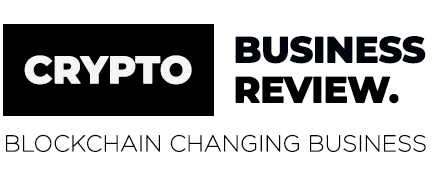*This content was produced by IBM
Many of us in the technology field are reflecting on how we can help build a stronger, more resilient future for healthcare. As the industry focuses on digital transformation, there is a greater appetite to solve business challenges with emerging technologies, such as blockchain.
This is because, by definition, blockchain technology empowers organizations to digitize transactions through a secured, shared and distributed ledger, improving efficiency and security.
Blockchain is the trigger that can help reinvent entire business models. A recent survey across industries found that 60 percent of blockchain early adopters are experimenting with a radically different business model or business process. This reinvention should include both back-end and consumer-facing processes. Organizations should not limit themselves to one or the other, but rather pursue both. For us in healthcare, the opportunities to improve care management, patient outcome and patient engagement are significant. Blockchain can enable these dreams.
The value of blockchain is not its technical aspects, but how organizations can use it to solve business challenges
I’ve spent many years exploring blockchain and how it can help healthcare companies advance business goals while protecting privacy. Here are a few lessons learned and what I believe to be the top five considerations for healthcare organizations that are in the early phases of their journey with blockchain:
1. Engage now
Blockchain is here to stay. Someday this technology will become as ubiquitous as the internet, and an early start may be a competitive advantage. One survey across multiple industries found that 8 in 10 early adopters of blockchain are investing in the technology in response to profit pools shifting. They see blockchain as a way to improve business outcomes, perhaps through better efficiency, risk management or security, but also to capture new potential sources of profit. Blockchain in healthcare has the same opportunities.
2. Start small and deliver
Organizations cannot use blockchain to change everything all at once. I suggest starting small with one use case — maybe it’s prior authorizations or physician credentialing — and demonstrate results to stakeholders. Execution is key to success and enables organizations to take learnings on to the next project.
3. Re-use building blocks
One way to ensure your organization can deliver is to tap existing solutions; don’t start a new blockchain from scratch. We live in an open source technology world and building foundations are already available. There are opportunities to use existing business technology building blocks for tasks such as document management, establishing provenance or identity management.
4. Team up
Blockchain is by nature a team sport. This means organizations need deep collaboration, and perhaps with organizations that may have even been competitors. In fact, 66 percent of organizations across industries that are active on blockchain are experimenting with an ecosystem. But bringing competitors together can be difficult. Successful consortiums can bring together industry players with clear incentives. Focus on participating in one, maybe two, consortiums to bring something live into production. In healthcare, we have seen many collaborative initiatives in recent years, and I expect we will see more in 2021.
5. Treat blockchain as another tool in your box
Blockchain as a trust layer is fantastic in its own right, but it can also enhance other tools in your technology box today and in the future. For example, building AI-based solutions on the top of a blockchain platform can increase the trust in the output of the AI, which is critical for adoption. Once blockchain creates trusted information — for example a patient updating and verifying medical information — AI can build on that information and may be able to help clinicians more effectively identify gaps in care, or insurers more quickly address inaccurate bills, or pharmaceutical companies create better clinical trials.
Blockchain presents an opportunity to improve many aspects of the healthcare experience, and the pandemic has accelerated the industry’s need to solve problems more efficiently. But beyond the pandemic, blockchain technology has far-reaching implications because it can be the foundation for reinvention and innovation. I predict that solutions that can used across industries and settings, such as those that enable organizations to verify health credentials for employees, patients, customers and visitors entering their site, while letting individuals maintain control of their personal health information, will be the most compelling.
Blockchain will continue to bring stakeholders together to use technology to create value and improve experiences for people across the healthcare ecosystem. I encourage all leaders to start.

Blockchain healthcare and life sciences
Tackle issues of trust, transparency and data integrity with blockchain-based networks and solutions.
IBM: See how blockchain solutions transform industries
Read the original article, published January 15, 2021 on the IBM Watson Health Perspectives blog.
Written by Eric Piscini, Global VP of Blockchain, IBM Watson Health






